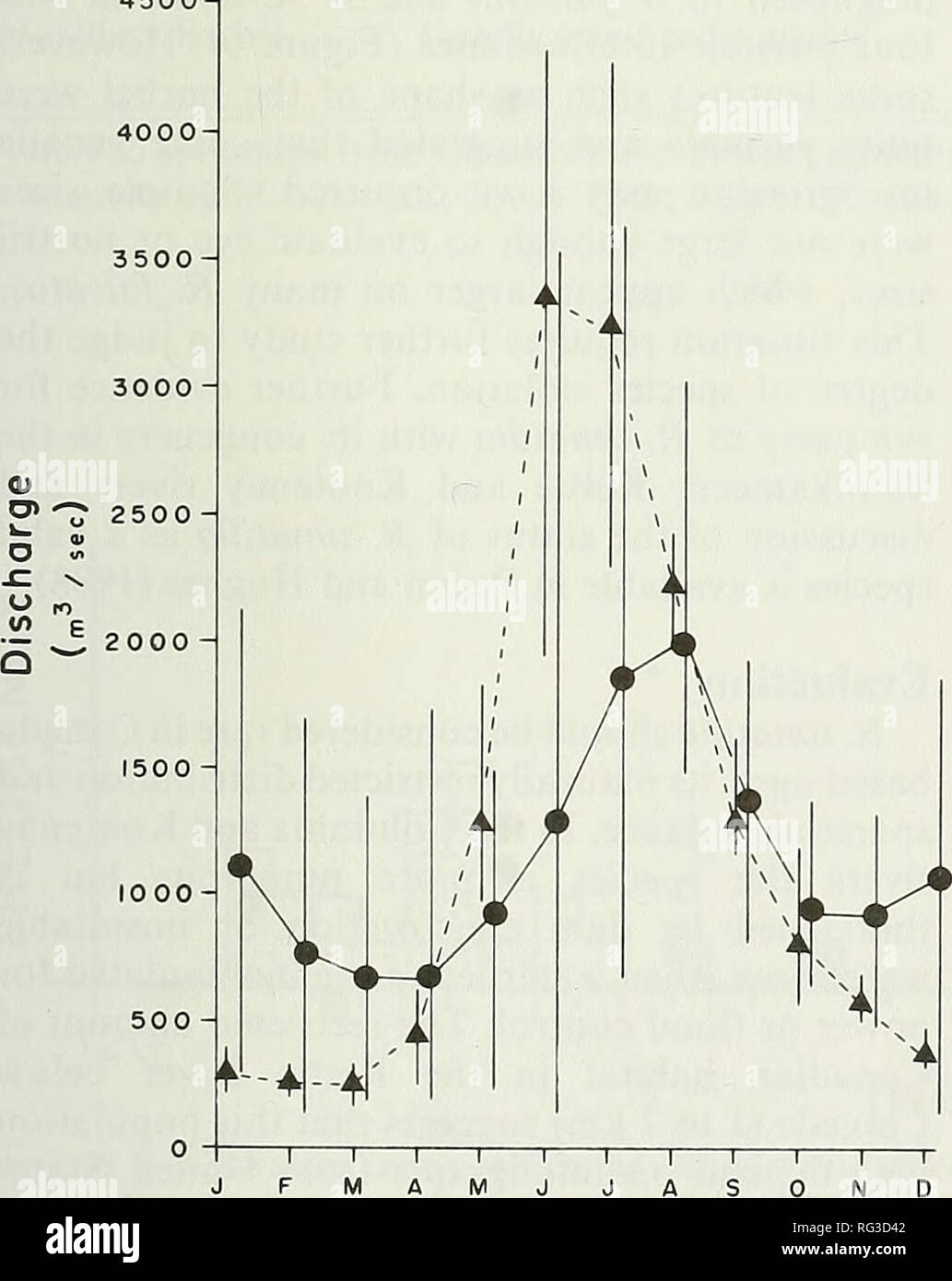. The Canadian field-naturalist. 1989 Hughes and Peden: Status of the Umatilla Dace 197 Table 1. Collections of Rhinichthys umatilla from Canada. Size Locality > 40 mm SL < 40 mm SL Similkameen River Kettle River Columbia River 11 20 13 2 200* 20* *approximate. addition to four juveniles above the South Slocan Dam. These artificial habitats with shorelines flooding during seasons when water levels are normally low must have an impact on dace populations and such effects need further study. A few sympatric Rhinichthys falcatus were also found here (Figure 3) and studies on species interac

Image details
Contributor:
Book Worm / Alamy Stock PhotoImage ID:
RG3D42File size:
7.1 MB (189.3 KB Compressed download)Releases:
Model - no | Property - noDo I need a release?Dimensions:
1409 x 1772 px | 23.9 x 30 cm | 9.4 x 11.8 inches | 150dpiMore information:
This image is a public domain image, which means either that copyright has expired in the image or the copyright holder has waived their copyright. Alamy charges you a fee for access to the high resolution copy of the image.
This image could have imperfections as it’s either historical or reportage.
. The Canadian field-naturalist. 1989 Hughes and Peden: Status of the Umatilla Dace 197 Table 1. Collections of Rhinichthys umatilla from Canada. Size Locality > 40 mm SL < 40 mm SL Similkameen River Kettle River Columbia River 11 20 13 2 200* 20* *approximate. addition to four juveniles above the South Slocan Dam. These artificial habitats with shorelines flooding during seasons when water levels are normally low must have an impact on dace populations and such effects need further study. A few sympatric Rhinichthys falcatus were also found here (Figure 3) and studies on species interactions are needed in this artificial habitat. Both the Kootenay and Columbia rivers possess large stretches of large, rounded and polished stones for which sediment is probably washed away by current during floods. We suspect interspaces between rocks allow refuge for larger R. umatilla along river banks at varying water levels. In particular, such habitats (especially those near Trail) can have a dense film of green algae. Month Figure 4. A comparison of Columbia River flow rates at Castlegar before (triangles) and after (dots) dam construction in 1968. covering rocks during summer and fall, indicating a potentially productive food base. Although such habitats yielded many juvenile R. umatilla to our electroshocker, we were unable to sample deeper swift waters safely, where large R. umatilla may occur. In the British Columbia section of the Kettle River very little habitat is available due to a lack of cobble and stone cover for much of the length below Cascade (see Peden and Hughes 1981). Only the "rockpile" at Cascade appears to offer interspaces large enough for adult cover and possible breeding habitat. Further downstream, sand or stones on sand offer little cover for adults or juveniles near the Canada-U.S. border. A comparatively large section of the Kettle River south of the international boundary offers suitable cobble and stone habitat and R. umatilla has bee